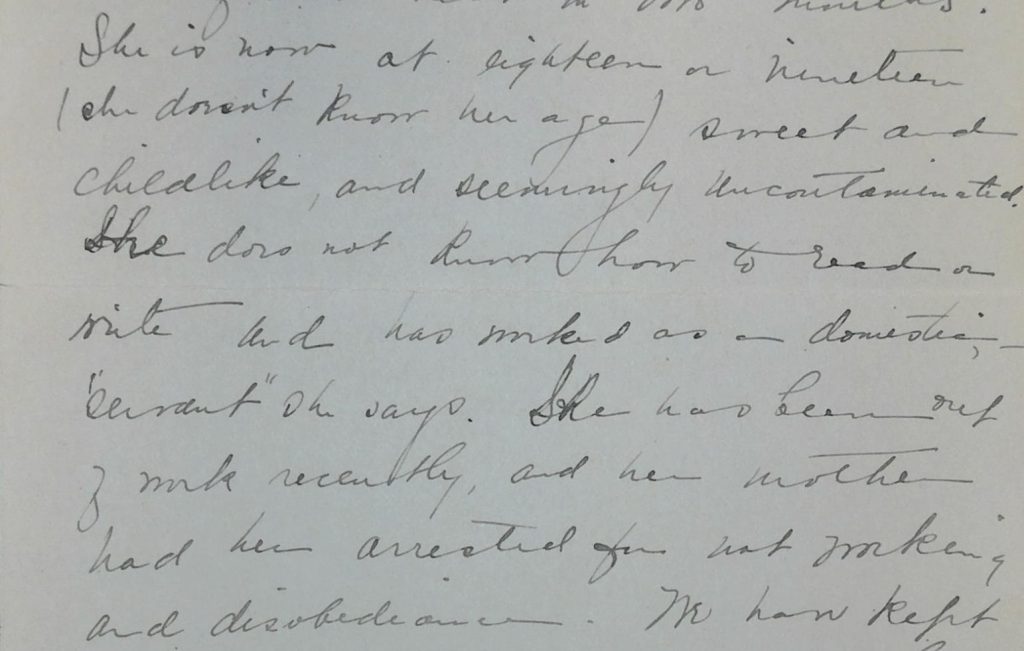
“She is now at eighteen or nineteen (she doesn’t know her age) sweet and childlike, and seemingly uncontaminated. She does not know how to read or write and has worked as a domestic ‘servant’ she says. She has been out of work recently, and her mother had her arrested for not working and disobedience.”
In this excerpt, Florence Cross Kitchelt talks about meeting Sadie Ruben for the first time. She and Sadie would exchange a handful of letters during Sadie’s stay at a Reformatory. In this initial description, Kitchelt emphasizes Ruben’s innocence through words like “childlike” and “uncontaminated,” casting her as a victim of circumstance and environment and her mother the villain. In making sure to note the lack of a formal education that Ruben has had, as well as her work as a domestic, Kitchelt draws attention to Ruben’s implied lower social status. In these initial observations, Kitchelt’s care and concern for the girl become connected to Ruben’s social and moral characterizations that mark her as innocent and salvageable.
Questions
What social narratives do you see arise in this description?
How does Kitchelt simplify Ruben’s story? What gets left out in her description?
